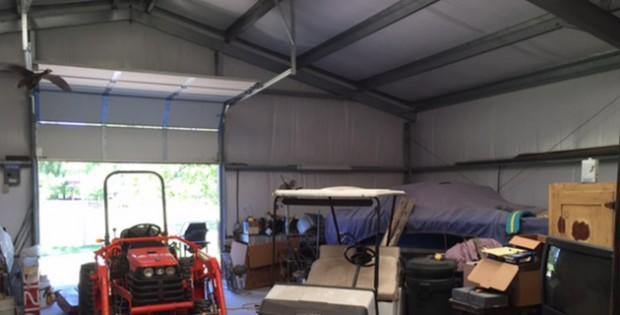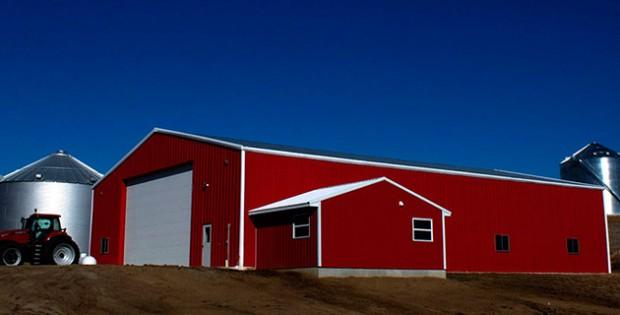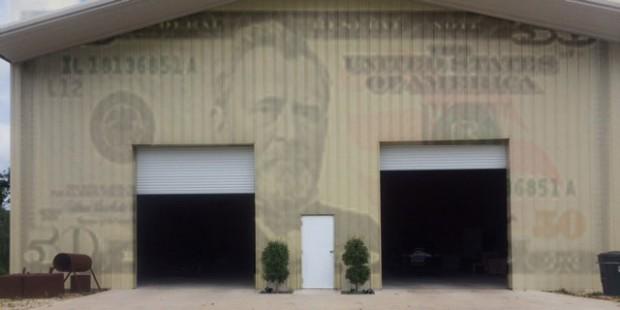Steel Buildings 101: Designing for Durability and Efficiency

Commercial steel buildings have a solid track record of helping businesses run profitably and efficiently. These sturdy and durable structures suit almost any application, such as shopping centers, vehicle dealerships, retail stores, and restaurants. Being versatile, they are easy to transform into medical clinics, strip malls, and storage facilities, too. However, these structures aren’t one-size-fits-all.
At Armstrong Steel, we focus on your unique requirements and other considerations to ensure a durable and efficient structure when designing a steel building, and in this blog, we will share how we design these structures for commercial applications. Let’s explore the design considerations that can deliver a structurally sound, reliable, and long-lasting structure.
Structural reinforcement: Buildings that withstand high winds and hurricanes
One of the key design considerations for commercial steel buildings is wind resistance. If you’re in a region prone to high winds, such as hurricane-prone and coastal areas, it’s crucial to prioritize structural integrity.
Prefabricated steel buildings have innate strength but must be engineered to meet your environmental conditions. For instance, they may need additional reinforcement to withstand high winds, especially those from tornadoes and hurricanes.
The importance of wind loads
Wind loads are the forces that the winds exert on the building. We accurately determine them based on your local climate conditions. Our calculations depend on the frequency and speed of winds in your region and your building’s orientation, size, and shape.
Reinforcements
Are you building in an area prone to tornadoes or hurricanes? We may consider extra reinforcements such as anchoring systems, stronger steel frames, and bracing in the design. These features will ensure your structure can withstand the extreme pressure of strong winds.
Roofing
Roofing is another consideration when designing commercial steel buildings for areas prone to high winds. It should resist uplift forces so it won’t peel off when the wind blows under the roof. In such cases, we may recommend aerodynamic designs, heavy-duty roofing materials, and wind-resistant fasteners to reduce the risk of damage during a hurricane. Aerodynamic roof designs such as hipped or gable roofs, may reduce wind resistance and maintain your structure’s integrity.
Surviving extreme temperatures with proper insulation
Temperature extremes are a critical factor when designing a commercial steel building. Steel may be durable and strong but can expand and contract when temperatures fluctuate significantly. If you’re building in a region with extreme cold or hot temperatures, keep these fluctuations in mind to design a stable, long-lasting structure.
Designing for cold climates
Commercial steel buildings can contract under extreme cold temperatures, leading to structural issues. With this in mind, we engineer our structures to accommodate contractions without compromising stability.
Insulation is also important to regulate temperatures. Luckily, most insulation systems are effective on steel buildings. Just be sure to use high-performance insulation such as fiberglass, spray foam, or rigid board to keep the interior warm. This will also ensure your building will be comfortable and cool in the summer, mitigating heat transfer and enhancing energy efficiency.
Designing for hot climates
In hot regions, steel buildings must incorporate materials that can reduce energy costs and reflect heat. This means applying heat-resistant paints, cool roofing, and other reflective coatings to the exterior. The goal is to minimize heat absorption to enhance thermal efficiency. Plus, it provides UV protection to reduce the risk of premature deterioration.
Snow loads
Commercial steel buildings can withstand heavy snow loads as long as they are designed for snow accumulation. If they can’t handle the weight, they will collapse, starting from the roof. Our engineers will calculate your region’s snow load based on local snowfall patterns and climate so we can design a roof that can support it.
Stronger roofing
In snowy climates, steel buildings must have strong roof structures with increased pitch to let snow slide off. The roof must slope at an angle that prevents snow and ice from accumulating. Moreover, we design these structures to have reliable structural supports such as beams and trusses to evenly distribute the snow’s weight across the building.
Additional safety measures against the cold and snow
Heating systems and snow guards are excellent features for commercial steel buildings in snow-prone zones. These additions will prevent snow build-up on the roof by melting it before it causes problems. Proper insulation is also a must to protect against freezing temperatures, especially in extremely cold climates. It prevents heat loss and promotes warmth, reducing the impact of low temperatures on the structure and maintaining a comfortable indoor environment.
Humidity and moisture control
Moisture and humidity are enemies of any structure, even commercial steel buildings. They get worse when you build in regions with heavy rainfall or coastal areas. Though durable, steel is still susceptible to corrosion when constantly exposed to moisture. High humidity can speed up the material’s deterioration over time, making it necessary to have effective moisture control measures.
Measures to prevent moisture damage
Thankfully, we can mitigate moisture damage and the risk of corrosion on commercial steel buildings. One way to do this is with protective coatings like galvalume, which prevents rust and extends the lifespan of metal panels. Additionally, we recommend designs with proper ventilation to minimize humidity indoors. A well-ventilated structure promotes airflow to reduce moisture that causes mildew and mold.
If you’re building in a coastal area, it’s crucial to pick corrosion-resistant materials. If you’re building near or on the water, you can also elevate the steel frame from the ground so it’s not always immersed, especially when the tide changes.
Let the experts design your steel building today
Let our building consultants and engineers take the guesswork out of designing commercial steel buildings. Start by pricing your building here. You may also discuss your project’s requirements with us by calling 1-800-345-4610.
Popular Posts

Will Adding a Steel Building Increase My Property Value?
I’ve seen steel buildings increase in popularity every day because builders use these durable, versatile and flexible construction solutions in every application. Not only have homeowners utilized a steel building for residential purposes, but builders have also made additions to their existing property. No doubt that a steel building garage will increase the value of a home, …
Will Adding a Steel Building Increase My Property Value? Read More »

Steel Building Quotes: Get a Grasp on Prices and Estimates
What is the first step of a steel building project, or any construction project for that matter? After you decide to add a new garage, agricultural or commercial building to your property, you’ll most likely start contacting steel building manufacturers for steel building quotes. From there, you can create a timeline for yourself and develop …
Steel Building Quotes: Get a Grasp on Prices and Estimates Read More »

4 Important Factors That Will Impact Your Steel Building Cost
For the past decade, the steel industry has undergone many transformations, and in effect it’s changed the way the construction industry views steel buildings. While the steel itself has been around for hundreds of years, designers and owners of metal buildings are seeing many increased benefits. Because of streamlined processes at manufacturers, energy saving paints …
4 Important Factors That Will Impact Your Steel Building Cost Read More »